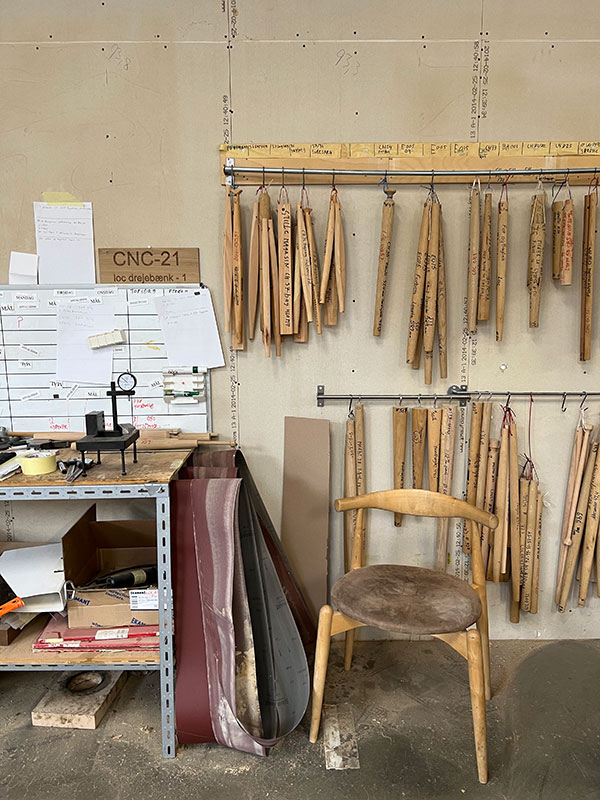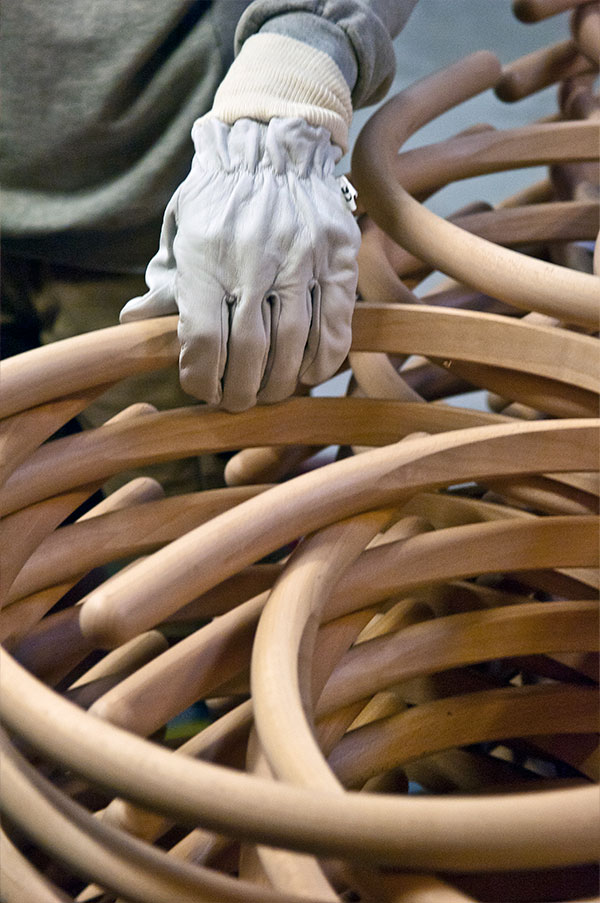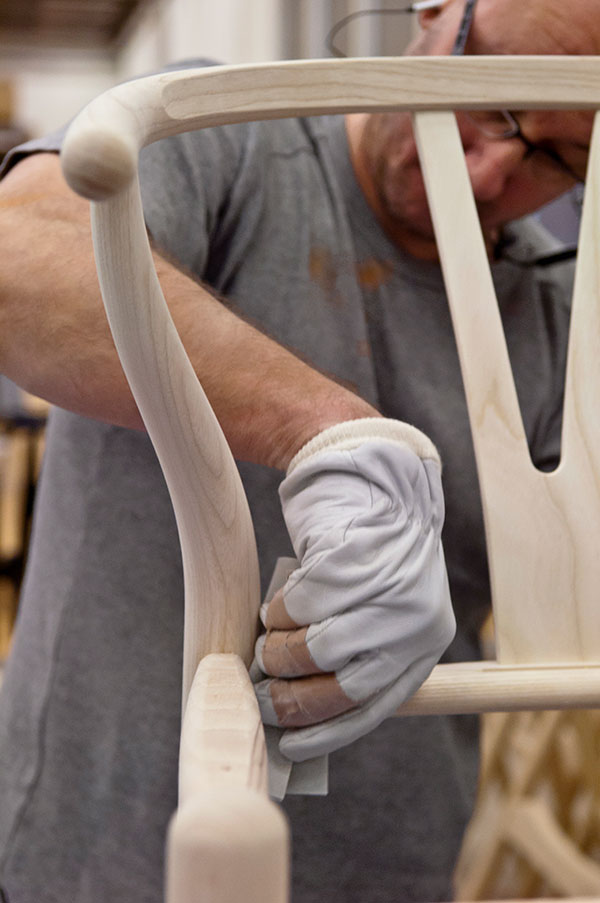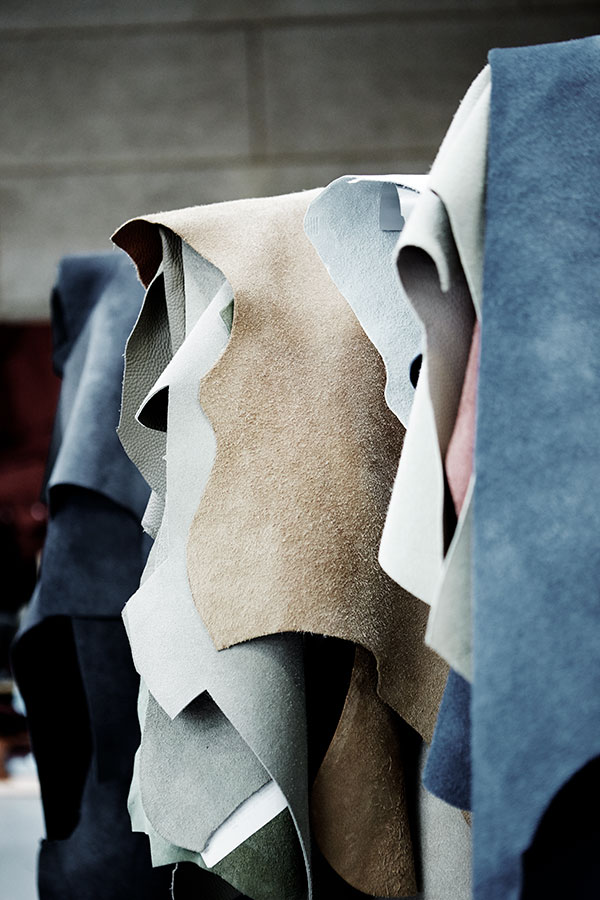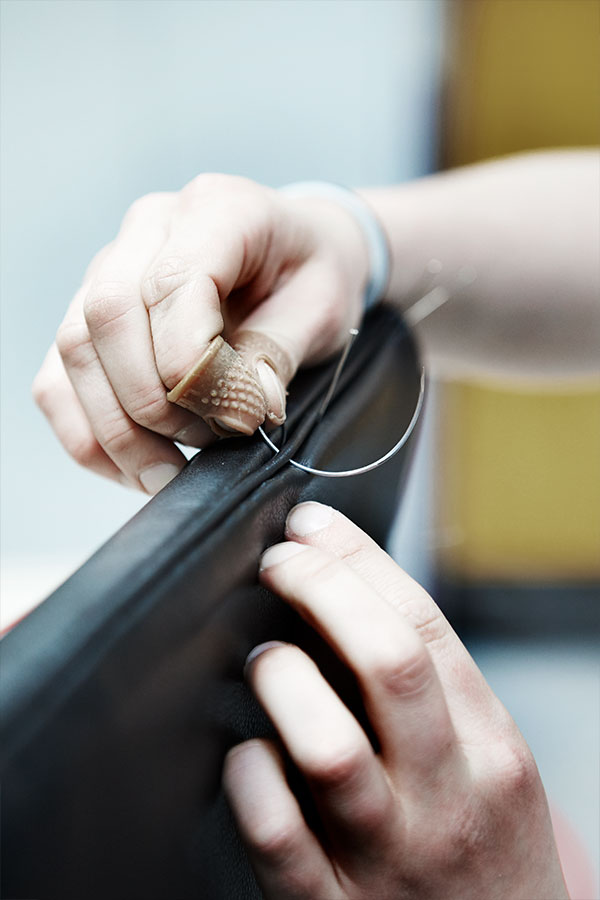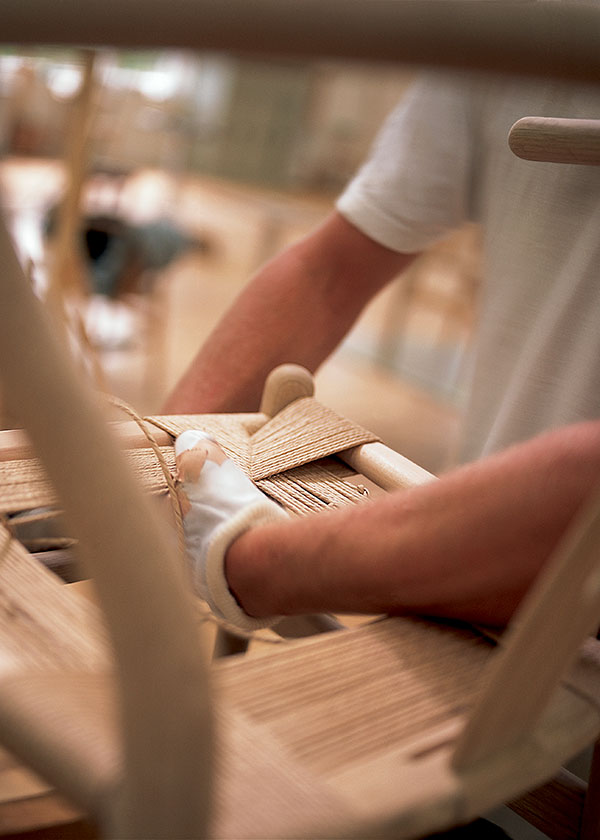Behind the scenes with Carl Hansen & Son
Situated just outside Odense in the Danish countryside, the Carl Hansen & Son factory sprawls out across the landscape, an ever-expanding campus housing the beating heart of one of the world’s most iconic furniture brands.
For over a century, Carl Hansen & Son have manufactured a diverse range of timeless designs, bringing an authentic touch of Danish style into our homes. The brand takes humble materials and breathes life into them, weaving a story around simple pieces of wood, elevating them into works of art.
Heritage and classic design
The story of a Carl Hansen & Son chair begins 150 years ago, with the planting of an oak tree. After a long life watching over luscious farmland and wandering sheep, the tree is harvested, then processed by a local sawmill. The company has worked with the same sawmills for three generations, one of the many enduring relationships they’ve formed across their locality.
Inside the factory, a legion of experienced craftspeople labour around the clock to turn raw materials into stunning pieces of art, carrying a legacy of tradition dating back over a hundred years.
A prime example of this commitment to heritage is the relaunch of the classic FH38 Windsor Chair, originally designed by Frits Henningsen in 1938, to the archetypal Windsor chair pattern developed in England over 300 hundred years ago.
The original plans are examined, refreshed, and implemented by a team of experts, each design choice a considered decision that harmoniously blends with a hundred others to produce a flawless result.
Much of the production process is completed by hand, relying on the keen eyes and steady hands of an expert craftsperson. These craftspeople begin their careers as apprentices, learning the intricacies of woodworking and joinery before graduating to the main factory floor, where they continue to master the myriad of designs manufactured by the brand.
One of the first tasks completed by the apprentices is the production of a toolbox, personalised to them, an enduring piece that will follow them throughout their career at Carl Hansen & Son and beyond.
The apprenticeship program demonstrates the company’s commitment to preserving and honouring traditional processes that might otherwise die out. Many apprentices remain with the company for their whole career, attaining a mastery of their craft and producing work that will stand the test of time and live on long after they’ve retired.
Innovation and reinvention
Walking through the Carl Hansen & Son factory, you quickly gain an appreciation for how dynamic and forward-looking the company is, adapting and refining their processes and products in a constant quest for perfection. This spirit of innovation permeates every aspect of the manufacturing process, exemplified by the symphony of whirring machines and the rasp of hand tools.
Forgotten designs are resurrected, dusted off and updated for modern audiences. While remaining faithful to the spirit of the original creator, Carl Hansen & Son ensure their pieces are practical for the modern consumer.
A prime example is the height of the CH24 Wishbone Chair, which started life 20cm lower than its current incarnation. As the average height of its customers changed, the company adjusted the chair to make sure it retained its exceptional ergonomics and comfort.
As technology and manufacturing techniques improve, older designs may suddenly become easier to produce. The CH20 Elbow Chair was once regarded as the “impossible chair” due to the complexities of its manufacture, meaning the design couldn’t be produced at the time of its inception.
Languishing in obscurity until 2005, the CH20 was rediscovered hiding in Marianne Wegner’s house hallway until the company’s CEO visited the toilet during a dinner party. Inspired by the design’s beautiful curves, Knud Erik brought the design to Carl Hansen & Son’s engineers, who utilised modern production techniques to produce the unproducible.
There is a constant dialogue between the craftspeople and production management, who give their workers the opportunity to perfectly optimise their processes. To ensure each blank of wood is perfectly sanded, the staff have created a “reverse skateboard” for each part, allowing the wood to rotate freely, ensuring an identical shape every time.
The harmony of man and machine
While a portion of the production process is handled by modern machinery, the bulk of the work is completed by these highly trained craftspeople. They hand finish and assemble every piece of furniture, leaving a personal touch in the way the wood is sanded. Some at the factory can tell who finished a piece by eye, examining the microscopic differences that stand as each craftsperson’s signature.
Carl Hansen & Son has committed to quality at every level, with no compromises, no short cuts, or easy ways around. The CH24 Wishbone Chair’s woven seat provides an excellent example of this commitment.
If you were to walk through the factory, you’d turn a corner and find yourself confronted with a veritable forest of in-production chairs, waiting for the last step before being shipped out. In an open-plan warehouse, a huge team of people weave the seats by hand using 120 metres of paper cord.
It takes three months to train these weavers, and the manager in charge of the team can instantly spot whether a candidate has the right qualities to succeed in the role. The atmosphere in the weaving room is one of serene calm, with serried ranks of weavers working harmoniously to create a modern masterpiece.
These simple, manual processes combine with the complex operations of modern machines to create stunning results. The commitment and dedication shown to the craft by the workers is unparalleled, adding to the layers of meaning bound up in every single piece that leaves the factory.
Looking to the future
Carl Hansen & Son has become an indelible part of contemporary design and will remain so for many years. The company strives to find ways to improve their environmental impact and build in a sustainable way that will allow them to continue to make beautiful furniture that can be enjoyed for generations to come.
Waste wood and sawdust is burned on-site, providing heat to 400 homes in the surrounding community. The company will also refurbish old chairs as part of their commitment to sustainability - there’s no need to produce a new chair if an old one can be restored and reused.
Much of the wood used by the company is FSC-certified, ensuring a sustainable supply of timber. Any offcuts are transformed into accessories like Christmas decorations, often designed by the factory workers themselves.
Discover the full Carl Hansen & Son collection on our brand page. Do you own a Carl Hansen & Son design? Share your styling with us over Instagram @nest_co_uk.
Words: Tom Mecredy





